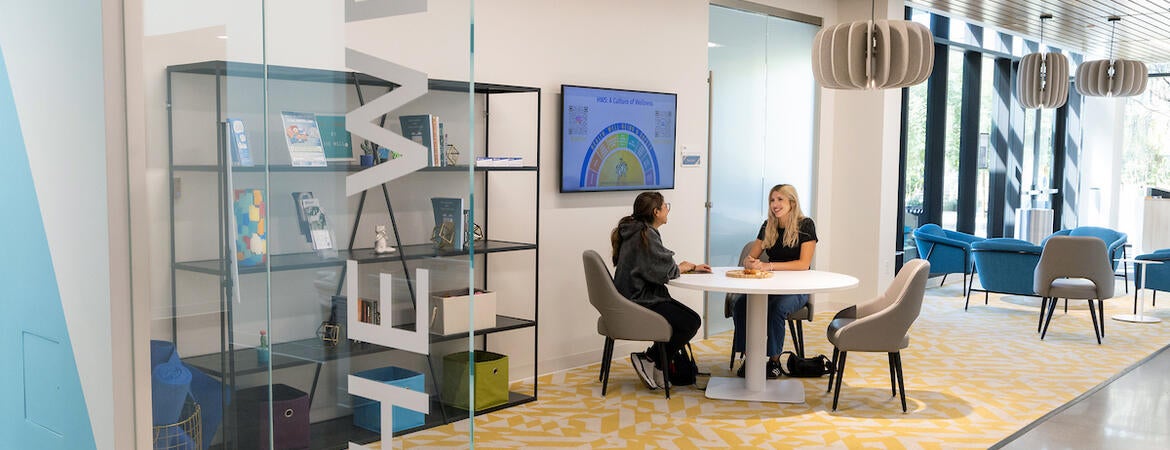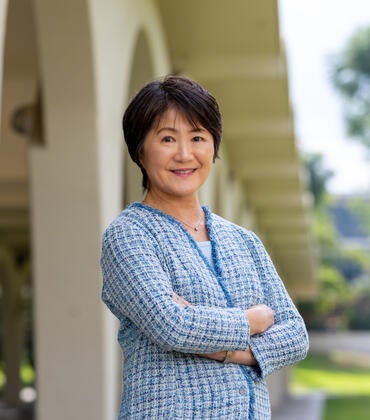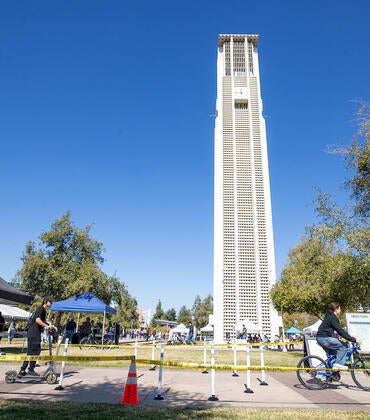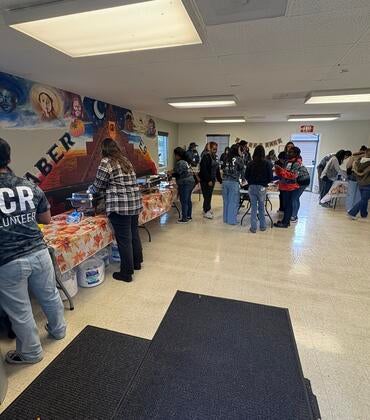UC Riverside students are more physically active and fewer face food insecurity, but many deal with loneliness, anxiety, and depression, according to the results of a recent survey assessing the status of their health and wellbeing.
UCR has participated regularly in the National College Health Assessment, or NCHA, administered by the American College Health Association, which released its results in September. Conducted biannually, 1,532 colleges and universities participated and almost 1.5 million students were surveyed.
The survey results provide a benchmark for the campus in showing how UCR compares to other institutions and in which areas it needs to devote more resources, said Denise Woods, vice chancellor for Health, Well-being and Safety.
The campus is in a better position to address a wide spectrum of health and wellbeing needs with the creation of the Division of Health, Well-being and Safety in 2021, which folded several departments from basic needs to counseling to police under one umbrella that provides a holistic approach, Woods said.
“What we’re trying to do is instill in them important lifetime skills that they can use to help them lead a healthier life,” she said.
The 2025 results showed positive trends in several areas. More students are physically active and taking advantage of health care options. Alcohol and cannabis use has gone down. Food security has risen to 55% compared to 48% two years ago.
The number of students reporting that they are in violent and/or abusive relationships has gone down from 10% to less than 6%. Kritika Gupta, an institutional research analyst and project investigator with Health, Well-being and Safety, described it as a significant achievement for programs such as Campus Advocacy, Resources, and Education, or CARE, which provides intervention and prevention support in stopping sexual violence.
“Students are becoming more and more aware of these resources, and we are hoping that there’s a direct relationship between this decrease that we are seeing and the increase in awareness that we are trying to promote,” Gupta said.
The survey results showing increased loneliness, anxiety, and depression are concerning, reflecting a national “loneliness epidemic.” This pattern is likely influenced by the pandemic-era high school experience, where many students faced prolonged isolation, shifts to remote learning, and disruptions in typical social and developmental milestones, Gupta said.
It’s an area the division plans to devote more resources toward by educating students about the primary care and mental health services available to them on campus such as Counseling and Psychological Services and peer mentoring programs.
At the Student Health and Counseling Center, which opened two years ago, medical, mental health, and well-being services are brought together at one integrated location. Students can get their primary care health checkups, talk to a mental health professional, or participate in workshops by the Well, the health promotion and educational program. Based on feedback from students, the center has extended its clinic hours to later in the evening.
“It’s a place where they can feel more connected to the campus, feel like somebody is listening and cares for them,” Woods said. “That goes a long way towards student success.”
The campus has seen a recent positive trend with an increase in the number of families and students interested in visiting the center and learning about its services during campus tours.
The survey results include data broken down by individual colleges and schools, which allows the division to partner with them on their specific concerns. The division plans to hold workshops at each college and school focused on their priority areas.
As it works with campus partners and continues to collect data, Health, Well-being, and Safety expects to build out its research portfolio on student wellbeing and shape its programs towards student needs, Woods said.
The division received two grants this year to assess its programs. One looks at the impact of emergency housing programs and the other studies safety for micromobility devices such as electric scooters, bicycles, and skateboards.
“We really want to show impact and how it connects back to student success,” Woods said.




